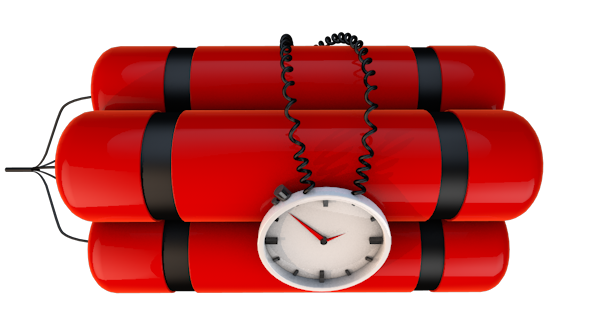
IELTS Practice Test Volume 2
- Đăng ngày: 07 Mar 2019
- Tests taken: 226,679
Đáp án
Part 1: Question 1 - 13
- 1 shock
- 2 death toll
- 3 shatter rock
- 4 detonates(ed)
- 5 frozen
- 6 iron, steel
- 7 blasting oil
- 8 volcanic pumice
- 9 engineering projects
- 10 TRUE
- 11 FALSE
- 12 NOT GIVEN
- 13 FALSE
- 1 shock
- 2 death toll
- 3 shatter rock
- 4 detonates(ed)
- 5 frozen
- 6 iron, steel
- 7 blasting oil
- 8 volcanic pumice
- 9 engineering projects
- 10 TRUE
- 11 FALSE
- 12 NOT GIVEN
- 13 FALSE
Part 2: Question 14 - 26
- 14 viii
- 15 ii
- 16 x
- 17 vii
- 18 vi
- 19 iii
- 20 B
- 21 A
- 22 E
- 23 D
- 24 C
- 25 D
- 26 B
- 14 viii
- 15 ii
- 16 x
- 17 vii
- 18 vi
- 19 iii
- 20 B
- 21 A
- 22 E
- 23 D
- 24 C
- 25 D
- 26 B
Part 3: Question 27 - 40
- 27 linguistic circles
- 28 tightly knit
- 29 Caspian Steppe
- 30 volcanic eruption
- 31 B
- 32 E
- 33 A
- 34 D
- 35 C
- 36 Proto-Human
- 37 Proto-Nostratic
- 38 Altaic
- 39 Southern Indian
- 40 D
- 27 linguistic circles
- 28 tightly knit
- 29 Caspian Steppe
- 30 volcanic eruption
- 31 B
- 32 E
- 33 A
- 34 D
- 35 C
- 36 Proto-Human
- 37 Proto-Nostratic
- 38 Altaic
- 39 Southern Indian
- 40 D
Leaderboard:
| # | Thành viên | Điểm | Thời gian | |
|---|---|---|---|---|
| tran bich van |  | 9.0 | 15:16 | |
| Ngọc Nguyễn |  | 9.0 | 16:06 | |
| Tran Trung |  | 9.0 | 17:24 | |
| 4 | Thisura Karunathilake |  | 9.0 | 17:34 |
| 5 | Mai Nguyen |  | 9.0 | 17:45 |
| 6 | SENWANG YANG |  | 9.0 | 17:59 |
| 7 | Đan Khánh |  | 9.0 | 19:24 |
| 8 | Aiman Ishmam |  | 9.0 | 19:44 |
| 9 | Huy Đứm Qi |  | 9.0 | 19:53 |
| 10 | Anindi K |  | 9.0 | 20:15 |
Giải thích chi tiết
Questions 1-5
Complete the summary of the first three paragraphs.
Choose NO MORE THAN TWO WORDS from the passage for each answer.
Nitroglycerine could explode with even a small 1 , thus it was the cause of a growing 2 . It was able to 3 since, in contrast to gunpowder, it 4 . When 5 , nitro could be handled more safely, yet deaths continued. |
- 1 Answer: shock
Keywords in Questions
Similar words in Passage
Q1:
Nitro glycerine could explode with even a small ________
The first of these crates arrived in a postal centre in San Francisco, and upon being accidentally dropped, promptly exploded, killing all 15 people present. The point was taken. 'Nitro' was dangerously shock sensitive.
Note:
After scanning, we can quickly find the needed information of Q1 should be found in paragraph B by the keywords “Nitro glycerine” and “explode”.
The writer states that Nitro was easily damaged by shock (shock sensitive). For that reason, the answer is “Shock”.
- 2 Answer: death toll
Keywords in Questions
Similar words in Passage
Q2
thus it was the cause of a growing ________
The problem was then in thawing it back into liquid from, at which point it became even more unstable. Again, a mounting death toll would testify to this fact.
Note
The keywords of Q2 are "cause", “growing”.
According to second paragraph, it (Nitroglycerin) became more unstable after throwing it back into water. As a result, this fact leads to a mount ting death toll.
For that reason, the answer is “death toll”.
- 3 Answer: shatter rock
Keywords in Questions
Similar words in Passage
Q3:
It was able to________ since, in contrast to gunpowder
Gunpowder could not efficiently shatter rock (although it was suitable for bullets and artillery shells). Only nitro could really do the job, and a Swedish chemist, Alfred Nobel, became interested.
Note
The keywords of Q3 are "able”, “gunpowder”.
According to paragraph 3rd, rock could not be shattered (broke) by gunpowder and only nitro could able to do this job (shatter rock).
All thing considered, we can conclude that the answer must be “shatter rock”.
- 4 Answer: detonates(ed)
Keywords in Questions
Similar words in Passage
Q4:
it ________, nitro could be handled more safely, yet deaths continued.
Nitro is a 'high' explosive, meaning that it 'detonates' - that is, is triggered to react by the virtually instantaneous shock wave, producing gases which expand at more than the speed of sound.
Note
The keywords of Q4 are " Nitro”, “2004”, “museum”.
Following the previous question (Q3), Nitro could be able to shatter rock by it “detonates” – this means that nitro is triggered to react by shock wave to explode.
All thing considered, we can conclude that the answer must be “detonates”.
- 5 Answer: frozen
Keywords in Questions
Similar words in Passage
Q5: When ______, nitro could be handled more safely, yet deaths continued.
However, it was soon discovered that when frozen (at about five degrees), nitro was much less sensitive to shock.
Note:
The keywords of Q5 are " Nitro”, “handled more safely” and “when”.
“much less sensitive” can be inferred as less dangerous, or “more safely”. When you handle anything, there is a shock against that object. So when things are less sensitive to shock, it means that they can be handled more safely.
According to the passage, nitro can be handled more safely when it is frozen at about 5 degrees. Since only a maximum of two words is allowed, the most suitable answer is “frozen”.
Questions 6-9
Answer the questions.
Choose NO MORE THAN TWO WORDS from the passage for each answer.
What were the two products that Nobel’s companies originally manufacture?
6
What was the first nitroglycerine product called?
7
What rock does diatomite resemble?
8
In what field was dynamite used most beneficially?
9
- 6 Answer: iron, steel
Keywords in Questions
Similar words in Passage
Q6:
What were the two products that Nobel’s companies originally manufacture?
Nobel's companies were moving from primarily iron and steel production to the almost exclusive manufacture of cannons, armaments, and gunpowder, and he saw the commercial value in making nitroglycerin manageable.
Note
The keywords of Q6 are " Nobel’s companies”, “originally”, “manufacture”.
According to the paragraph 4th, Nobel’s companies produced primarily iron and steel, then they changed to produce almost exclusive products. Thus, the answer must be Iron and Steel.
- 7 Answer: blasting oil
Keywords in Questions
Similar words in Passage
Q7: What was the first nitroglycerin product called?
He first tried combining nitro with conventional gunpowder, marketing the final product as 'blasting oil', yet accidental explosions continued.
Note:
The keywords of Q7 are " first product”, “Nitro glycerine”.
According to the paragraph 4th, Nobel produced the first product by combining Nitro and gunpowder and named it ‘blasting oil’. Thus, the answer must be Blasting oil.
- 8 Answer: volcanic pumice
Keywords in Questions
Similar words in Passage
Q8: What rock does diatomite resemble?
This was produced by grinding down diatomite, a rock found around the local hills. It is similar to volcanic pumice, being very light and highly porous, yet it is actually the fossilised remains of diatoms, a hard-shelled alga.
Note
The keywords of Q8 are " rock”, “diatomite”, “resemble” (similar).
According the Passage, the liquid was produce by diatomite which is similar to volcanic pumice.
The answer must be Volcanic pumice.
- 9 Answer: engineering projects
Keywords in Questions
Similar words in Passage
Q9: In what field was dynamite used most beneficially?
Yet, while high explosives serve a commendable purpose in peacetime engineering projects.
Note
The keywords of Q9 are " dynamite”, " most beneficially”.
Following the paragraph, High explosives (dynamite) provide a commendable purpose (admirable benefit) for engineering projects. Therefore, the correct answer must be engineering projects.
Questions 10-13
Do the following statements agree with the information given in Reading Passage One?
Write
| TRUE | if the statement agrees with the information |
| FALSE | if the statement contradicts the information |
| NOT GIVEN | If there is no information on this |
10 Dynamite is safer than nitroglycerine.
11 The French newspaper condemned Alfred Nobel because of his wealth.
12 Nobel’s will left some money to his friends.
13 Many now condemn Nobel for his production of weapons.
- 10 Answer: TRUE
Keywords in Questions
Similar words in Passage
Q10: Dynamite is safer than nitroglycerine.
The breakthrough finally came when Nobel's company mixed liquid nitroglycerine with an inert absorbent silicate sand, known as 'diatomaceous earth'. This was produced by grinding down diatomite, a rock found around the local hills. It is similar to volcanic pumice, being very light and highly porous, yet it is actually the fossilised remains of diatoms, a hard-shelled alga. This combination immediately made nitro less dangerous to handle, and by being solid, more convenient to package and transport. Nobel patented his invention in 1867 under the name of 'dynamite', based on 'dyna' the Greek word for 'power'.
Note
The keywords of Q10 are “Dynamite”, “Nitroglycerin”.
Looking at paragraph 5th, Nobel’s company produced a mixed liquid which made nitro less dangerous to handle and named it “Dynamite”.
Therefore, the answer must be True.
- 11 Answer: FALSE
Keywords in Questions
Similar words in Passage
Q11:
The French newspaper condemned Alfred Nobel because of his wealth.
The French newspapers mistakenly thought it was the death of Alfred himself, and published an obituary.
Note
The keywords of Q11 are “French newspaper”, “Alfred Nobel”, “his wealth”.
The French newspaper mistakenly published an obituary of the death of Alfred instead of his brother Ludvig.
Thus, the answer must be False.
- 12 Answer: NOT GIVEN
Keywords in Questions
Similar words in Passage
Q12: Nobel’s will left some money to his friends.
When Alfred Nobel died, single and childless, at age 63, he specified that, apart from some minor bequests, his vast fortune (about 200 million dollars in today's money) be set aside for the establishment of the Nobel Prizes. These would be awarded annually for those who confer the 'greatest benefit on mankind' in physics, chemistry, peace, medicine, and literature. Nobel's strategy worked, as the Nobel Prizes are now considered among the most prestigious in the world.
Note
The keywords of Q12 are “Nobel’s will”, “money”.
According to the last paragraph, the majority of his fortune was used for the establishment of the Nobel Prizes apart from some minor bequests. But no extra information is about these bequests.
Thus, the correct answer must be Not given.
- 13 Answer: FALSE
Keywords in Questions
Similar words in Passage
Q13:
Many now condemn Nobel for his production of weapons.
Nobel's strategy worked, as the Nobel Prizes are now considered among the most prestigious in the world. Few consider that all that money comes from nitroglycerin, dynamite, gunpowder, and armament manufacture, the indirect cause of incalculable human carnage.
Note
The keywords of Q13 are “Nobel”, “production”.
Following the passive, few people now think about his production (Nitroglycerin, dynamite…) as the cause of human carnage.
For that reason, the correct answer must be False.
Reading Passage 1
You should spend about 20 minutes on Questions 1-13, which are based on Reading Passage One.

It’s Dynamite
In 1866, an American railroad company was constructing a tunnel through the Sierra Nevada mountains. They encountered particularly hard rock, and ordered three crates of the only blasting explosive that could do the job: nitroglycerine. The first of these crates arrived in a postal centre in San Francisco, and upon being accidentally dropped, promptly exploded, killing all 15 people present. The point was taken. 'Nitro' was dangerously shock sensitive. Its transportation was soon banned, and from then on, it had to be manufactured by on-site laboratories - an expensive and still quite dangerous task, as the number of deadly explosions would demonstrate.
The history of nitroglycerine is full of such sad events. It was first synthesised in 1847 by Ascanio Sobrero, an Italian chemist, and he was so frightened by his discovery that he did not immediately publish his findings. He was also the first to caution the world against its use, in both private letters and a journal article, arguing that it was impossible to handle the substance safely. However, it was soon discovered that when frozen (at about five degrees), nitro was much less sensitive to shock. The problem was then in thawing it back into liquid form, at which point it became even more unstable. Again, a mounting death toll would testify to this fact.
Yet nitroglycerine always remained in demand, being the first practical mining explosive produced. Prior to this, gunpowder was used, but this was limited and clumsy. Gupowder is a 'low' explosive, meaning that it 'burns' from layer to layer, producing gases which expand at less than the speed of sound. Nitro is a 'high' explosive, meaning that it 'detonates' - that is, is triggered to react by the virtually instrantancous shock wave, producing gases which expand at more than the speed of sound. Gunpowder could not efficiently shatter rock (although it was suitable for bullets and artillery shells). Only nitro could really do the job, and a Swedish chemist, Alfred Nobel, became interested.
Nobel's companies were moving from primarily iron and steel production to the almost exclusive manufacture of cannons, armaments, and gunpowder, and he saw the commercial value in making nitroglycerine manageable. He began experimenting - at considerable cost. In 1864, his younger brother and several workers were killed in a factory explosion. Undererred, Nobel built a new factory in the remote hills of Germany, determined to find the answer. He first tried combining nitro with conventional gunpowder, marketing the final product as 'blasting oil', yet accidental explosions continued. His factory was destroyed yet again, on two occasions!
The breakthrough finally came when Nobel's company mixed liquid nitroglycerine with an inert absorbent silicate sand, known as 'diatomaccous earth'. This was produced by grinding down diatomite, a rock found around the local hills. It is similar to volcanic pumice, being very light and highly porous, yet it is actually the fossilised remains of diatoms, a hard-shelled alga. This combination immediately made nitro less dangerous to handle, and by being solid, more convenient to package and transport. Nobel patented his invention in 1867 under the name of 'dynamite', based on 'dyna' the Greek word for 'power'.
In its best-known form, dynamite was made in short paper-wrapped sticks consisting of three quarters intro to one quarter diatomaccous earth, but it would always remain dangerous to manufacture, store, and use. Over time, the nitro can seep out, crystallising on the outside of the sticks or pooling at the bottom of storage boxes, with all the consequent instability that raw nitro possesses. Nevertheless, in an age of extensive railroad and tunnel construction, the product would earn Nobel a great fortune. Yet, while high explosives serve a commendable purpose in peacetime engineering projects, Nobel's fortune was also based on weapons of death and destruction, and the public knew it.
Nobel himself was to become greatly perturbed, especially given the events which occurred when his brother Ludvig died. The French newspapers mistakenly thought it was the death of Alfred himself, and published an obituary. Alfred happened to be in France at the time, and one can only wonder at his reaction upon reading about his own death! Yet the obituary was harsh and condemning, calling Nobel the 'merchant of death', someone who 'became rich by finding ways to kill more people faster than ever before'. It was certainly this event which influenced him, in 1895, to write a new last will and testament, one year before he died. It would astonish everyone, and change the course of history.
When Alfred Nobel died, single and childless, at age 63, he specified that, apart from some minor bequests, his vast fortune (about 200 million dollars in today's money) be set aside for the establishment of the Nobel Prizes. These would be awarded annually for those who confer the 'greatest benefit on mankind' in physics, chemistry, peace, medicine, and literature. Nobel's strategy worked, as the Nobel Prizes are now considered among the most prestigious in the world. Few consider that all that money comes from nitroglycerine, dynamite, gunpowder, and armament manufacture, the indirect cause of incalculable human carnage.







